M52 Self-Propelled Artillery (USA)
Since 1945, the U.S. Army has operated the howitzer M37 Howitzer Motor Carriage. This combat vehicle built on a light chassis tank M24 Chaffee, carried a 4 mm M105 gun and was intended for fire support of troops with direct fire or from closed positions. The self-propelled gun M37 did not have time for World War II, but was used during the war in Korea. However, long before such equipment fired its first shots on the battlefield, a decision was made to replace it. The chassis of the M24 light tank was considered obsolete, and the specific layout borrowed from one of the previous projects imposed certain limitations on the performance.
In 1948, the Detroit arsenal received an order to begin developing a promising Howitzer Motor Carriage class combat vehicle. The new model should have been built on the basis of the chassis of the newest light tank M41 Walker Bulldog and equipped with a 105 mm caliber cannon placed in a rotating turret. Taking into account the operating experience of self-propelled artillery of previous models, the customer demanded that the turret be completely closed and able to protect the crew from shelling from all angles.
The new project received the working designation T98. Class technology was originally defined as Howitzer Motor Carriage or HMC. Later, after testing and refinement, promising self-propelled guns were put into service with the name M52. At about the same time, the existing classification of armored combat vehicles was revised, and therefore the self-propelled gun was designated as Self-Propelled Howitzer or SPH.
In parallel with the project T98 developed another promising self-propelled gun with a more powerful tool. The armored vehicle, subsequently adopted as M44, was also based on the chassis of the M41 light tank. To simplify the development and subsequent mass production, the two projects suggested using similar ideas and solutions concerning the adaptation of the existing chassis to the implementation of new tasks. As a result, the production machines M44 and M52 had similar hulls and undercarriages, differing mainly in the fighting compartment.
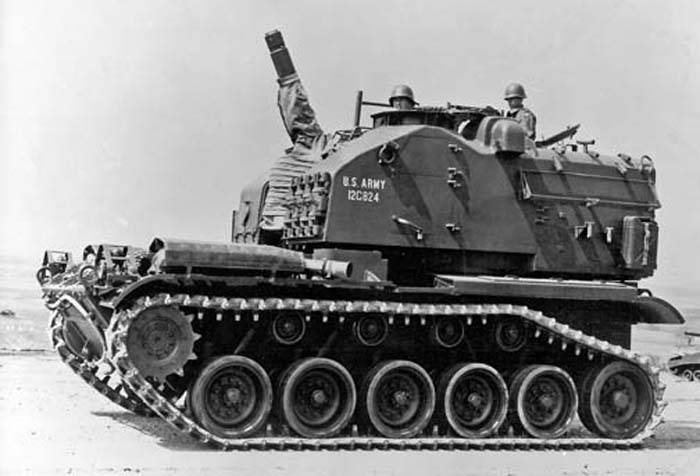
Self-propelled gun while serving in the US Army. Photo US Army
Tank "Walker Bulldog" was built according to the classical layout with the stern placement of the engine compartment. The project promising ACS proposed to use a different placement of units associated with the use of aft fighting compartment. As a result, the existing chassis had to undergo serious modifications. In fact, the tracked chassis turned backwards, moving the engine compartment to the front of the car. The former management and combat compartments, respectively, were transferred to the stern, where the new tower was to be located.
The modified chassis body had a welded structure and had to be assembled from rolled armor plates up to 12,7 mm thick. Less thin armor was used only on the bottom, which had a thickness of 9,6 mm. The frontal part of the body consisted of two inclined sheets forming the construction of a wedge-shaped profile. Behind them was a horizontal roof with a set of hatches and grilles for air access to the engine compartment. The sides of the hull were placed vertically and equipped with fenders. In the stern of the hull, a box-like unit with a vertical stern sheet was enlarged in comparison with the base tank.
On the chase in the aft hull it was proposed to install a completely closed tower. Like the hull, it had to be assembled by welding and protecting the crew with 12,7-mm armor. The tower had developed onboard units of the forehead, between which there was a vertical detail with the embrasure of the gun. The frontal projection of the tower was protected by inclined lower and curved upper parts. Provided for the use of two vertical sides of relatively complex shape. The stern leaf of the tower was virtually absent, since it was an arcuate detail with a central vertical stand. Other areas of the stern projection were engaged in the doors of two large hatches.
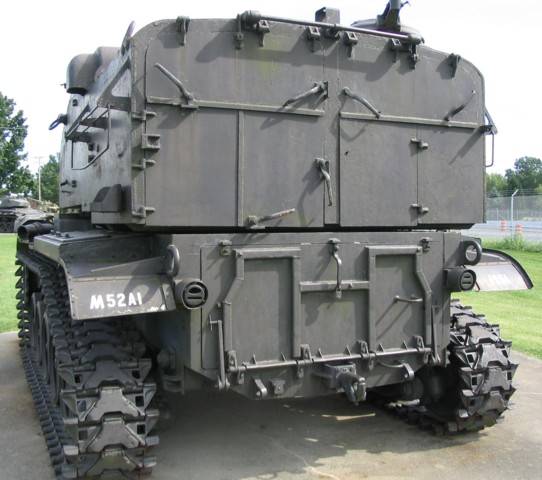
View of the stern. Photo Afvdb.50megs.com
The use of the finished chassis of the serial tank led to the preservation of the existing composition of the power plant. In the front compartment of the T98 hull, there was a six-cylinder gasoline engine of box-mounted Continental AOS-895-3 hp power 500. With the engine mated transmission Allison CD-500-3 with two forward gears and one rear. The issuance of torque was carried out on the front drive wheels. Placing the control post in the turntable forced the project authors to use the original systems to transmit commands to the engine.
The undercarriage of an ACS T98 was based on the details of the M41 tank, but had more similarity with the M44 self-propelled gun units. On each side there were six track rollers with an individual torsion suspension. The first, second and fifth pairs of rollers were equipped with additional shock absorbers. In front of the hull there was a pair of drive wheels. The functions of sloths performed rear rollers, lowered to the ground level. Also in the running gear were four supporting rollers on each side. The caterpillar borrowed from the tank had tracks 530 mm wide.
In front of the turret, a M85-type cannon with attachments for the rocking artillery unit was placed. The main weapons self-propelled gun became 105-mm howitzer M49. The gun had a rifled barrel with a length of 22,5 caliber and was equipped with hydraulic recoil devices. The latter were able to be placed completely inside the fighting compartment, which made it possible to simplify the design of the mask of the gun. The howitzer used unitary shots of the 105 caliber. Allowed the use of all existing shells for various purposes.
Requirements for the project T98 HMC implied the use of a rotating tower. Due to the design features of the combat compartment and the construction of the gun mount, it was not possible to ensure the turret's circular rotation. At the same time, however, it was allowed to turn 60 ° to the right and to the left of the longitudinal axis of the vehicle, which significantly improved the combat capabilities in comparison with equipment that did not have a swinging turret. The rotation was carried out using a manual drive with hydraulic amplification. The artillery unit rocked within the vertical sector from -10 ° to + 65 °.
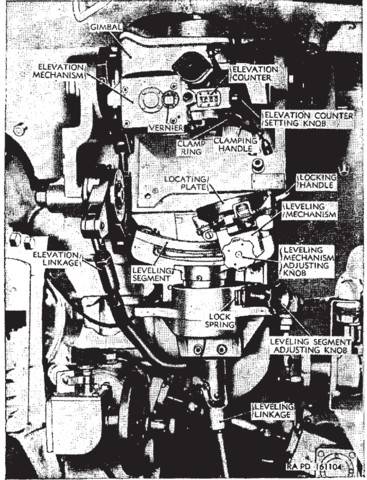
Equipment at the gunner's workplace. Photo Afvdb.50megs.com
Direct fire shooting was proposed using the M101 telescopic sight. For working in closed positions, M99 and M100 sights were offered. There were also a quadrant of the M1 type and an azimuth pointer for the T24 model. All sights were mounted on the gunner’s workplace to the right of the gun.
In the front and rear of the tower and the fighting compartment as a whole, we managed to place several racks for carrying artillery shots. The ammunition consisted of 102 unitary shells. 21 shot was in the laying of the first stage.
As an additional weapon for self-defense, it was proposed to use the high-caliber machine gun M2HB. This weapon was mounted on a turret located on the roof of the turret at the starboard side. The self-propelled commander could use a machine gun, leaning out of his own hatch. Ammunition machine gun consisted of 900 cartridges in tapes.
The crew of SAU T98 consisted of five people; all of them were located in the general fighting compartment. The driver was to the left of the gun, above his place was a small turret with a set of viewing instruments. In the left side next to the driver there was a small door. To the right of the howitzers placed a gunner's place with all sighting systems and weapons controls. Behind the gunner, under his own hatch, was the commander. Assistant gunner and loader were placed in the free volumes of the fighting compartment. With long-term shooting, implying the supply of ammunition from the ground, the driver and commander had to dismount and help loaders. In addition, in this case, the crew could be supplemented by three fighters feeding shells.
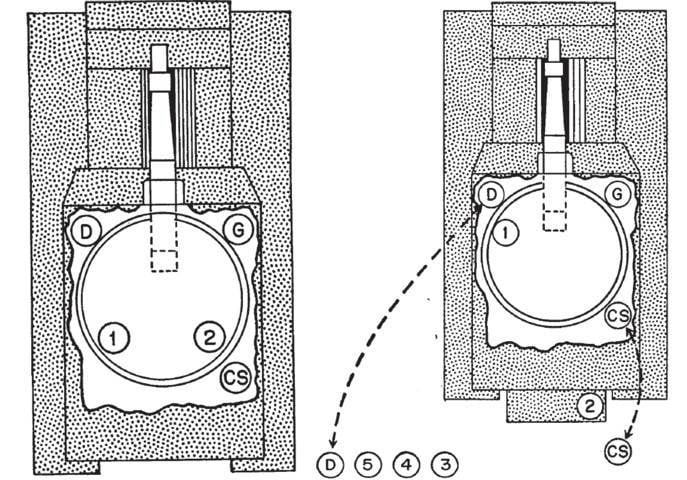
Placement of the crew on the march or when firing using portable ammunition (left), as well as when firing shots from the ground (right). D is the driver, G is the gunner, CS is the commander, the numbers indicate the loaders. Figure Afvdb.50megs.com
The main means of access to the fighting compartment were stern hatches for the hull and turret. A large opening in the stern sheet of the hull was covered with a rectangular lid lifted upwards. In addition, on the stern of the hull there was a footboard tilted down. When translated into the stowed position, the hatch cover was first closed, and then the step was raised upwards. Almost the entire aft projection of the tower, with the exception of the large arc and the central pillar, was occupied by two large hatches. From above, the hatches were closed with upward-leafing doors, from below - sideways diverted.
The length of the self-propelled howitzer T98 was 5,8 m, width - 3,14 m, height (taking into account the machine-gun installation) - 3,3 m. The combat weight reached 24,5 t. The available power plant allowed the self-propelled gun to reach speeds of 56- 140 km. The car could climb the slope of the 145 ° steepness, cross the 30-moat or climb the 1,8 height, see. Water barriers crossed along the ford to the depth of 76 m; armored car could not swim.
In 1950, the first prototype of a promising self-propelled 105-mm howitzer was built and released for testing. During the tests, the basic characteristics of the machine were confirmed, and some shortcomings were identified. Some of the problems found could be solved by a slight change in the design of certain units, while others required a more complex solution. So, the existing fighting compartment had some problems of a layout and ergonomic nature, because of which it had to be redone.
The project SAU with an updated combat compartment received a new designation T98E1. The main innovation of this project was to increase the diameter of the shoulder strap to 1850 mm. Due to this, it was possible to ensure optimal placement of weapons and other units. At the same time, the increase in shoulder strap required to redo the roof of the hull and the bottom of the tower.
By January 1951, the main work on finishing the existing sample was completed, after which the customer allowed to start mass production of equipment. However, even by this time the self-propelled gun did not get rid of all the problems and did not fully meet the requirements of the army. For some time, the designers of the defense industry, in collaboration with army experts, determined the actual capabilities of the equipment, formed lists of necessary improvements, and then implemented them. For several years, individual elements of the chassis and turret were reworked. For example, at a certain point it was decided to abandon the existing hydraulic amplifiers as part of the guidance mechanisms.
The adjustment of the existing sample was completed only in the 1955 year. By this time, the combat vehicle was put into service under the name M52. The completion of the improvement of technology allowed to begin full-scale mass production. For several years, starting with 1951, the American industry built a new type of 683 ACS. The cars of the first issues over time were refined in accordance with the current version of the project.
In the future, the equipment went through another upgrade. All the existing machines received a new Continental AOSI-895-5 engine, which was different from the one previously used by direct injection. After this update, self-propelled guns got the name M52A1.
The first operator howitzer SAU M52 was the US Army. The beginning of the tests in 1950 gave the opportunity to complete all the necessary work in the shortest possible time, and then send a new equipment to Korea. Nevertheless, the finishing process was delayed, which is why serial armored vehicles entered full operation only in the second year after the end of the war. As a result, serial self-propelled guns with sufficient activity were used by artillery units, but during the service in the American army they did not get to the war.
The United States continued to operate such technology until the early sixties. During this period, the command considered the light tank M41 Walker Bulldog obsolete and decided to remove it from service. The same fate was soon to comprehend and technology at its base. By the middle of the decade, the US Army abandoned the M44 and M52 self-propelled guns on a similar chassis. It should be noted that the equipment with not fully developed resource was not sent for disassembly. On the contrary, still usable machines were left for repair, and then transferred to friendly states.
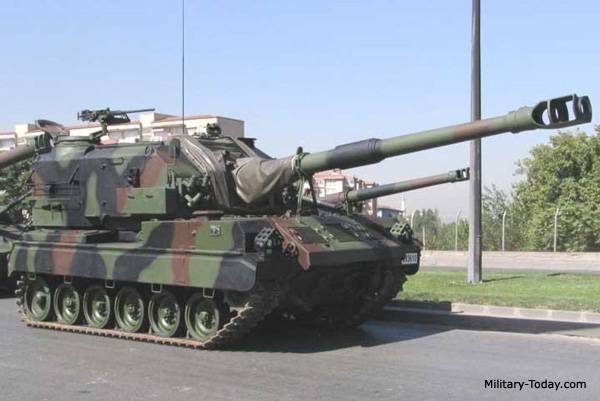
Upgraded machine M52T. Photo Military-today.com
Until the end of the sixties, self-propelled guns M52 SPH managed to replenish the fleet of vehicles of the land forces of Austria, Greece, Germany, Jordan, Spain, Tunisia, Japan, Turkey, etc. The US-Turkish contract is of particular interest. While most customers purchased no more than a few dozen cars, the Turkish army bought self-propelled guns over 360. In addition, almost all foreign armies eventually removed M52 from service. Turkey, in turn, decided not to abandon obsolete machines. In the mid-eighties, a program of modernization of old American-made ACS started. One of the results of this work was the emergence of self-propelled M52T. Due to the new powerplant, a different weapon and modern electronics, we managed to increase the combat potential many times, while retaining the existing chassis. Modernized ACS M52T are still in service with the Turkish army or are in reserve.
In the fifties, the American industry built not too many self-propelled M52 / M52A1 self-propelled guns. However, due to certain reasons, a significant number of such equipment at the end of operation managed to avoid disposal. At the moment, in various museums there are almost two dozen self-propelled guns. In addition, at least 300-350 ACS of the improved version still remain in service or in reserve in Turkey.
Howitzer self-propelled guns M52 American development was similar to the similar machine M44 not only in terms of the base chassis. Both cars had chances to get on the Korean War, but they didn’t manage to get to it because of the prolonged refinement. Further exploitation in the army of the developer country did not differ in intensity and noticeable events. Later, the cars were written off and sold to third countries. Almost all of them eventually abandoned obsolete equipment, but one of the new operators has upgraded and continues its operation. A very interesting fate for the equipment created in the early 1950s.
On the materials of the sites:
http://afvdb.50megs.com/
http://globalsecurity.org/
http://militaryfactory.com/
http://the.shadock.free.fr/
http://military-today.com/
List of surviving ACS M52 SPH:
http://massimocorner.com/afv/Surviving_M52.pdf
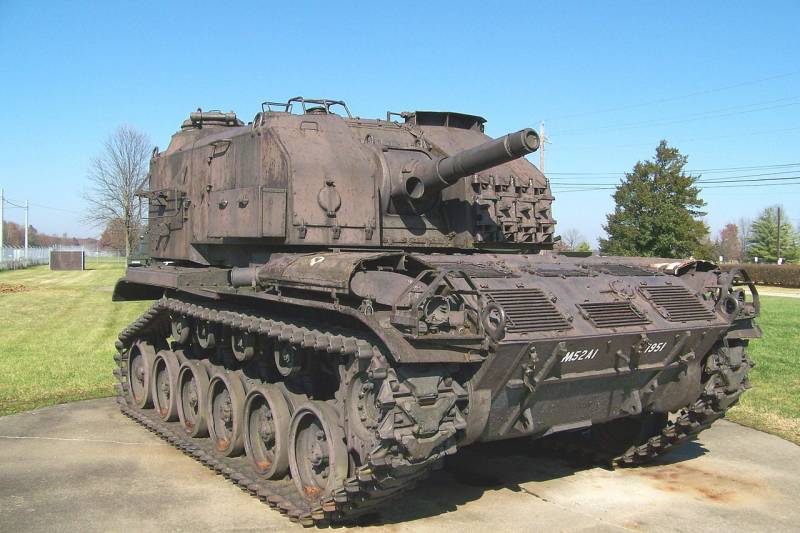
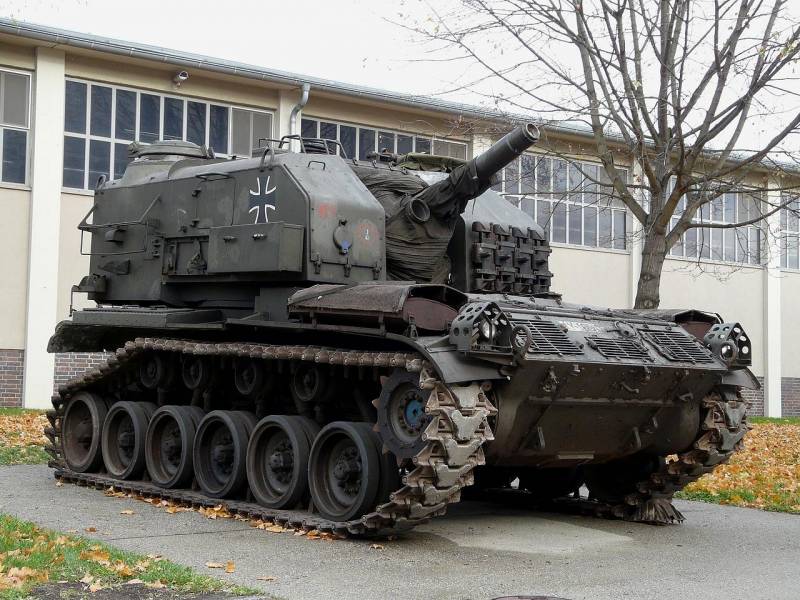
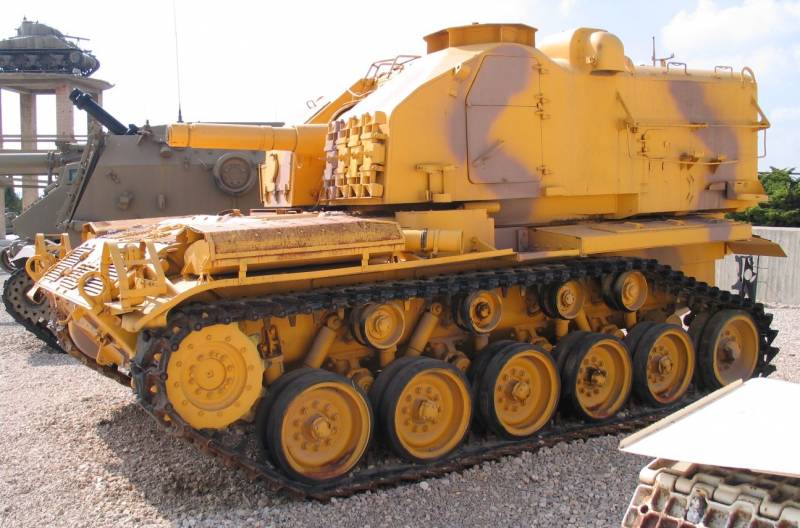
Information